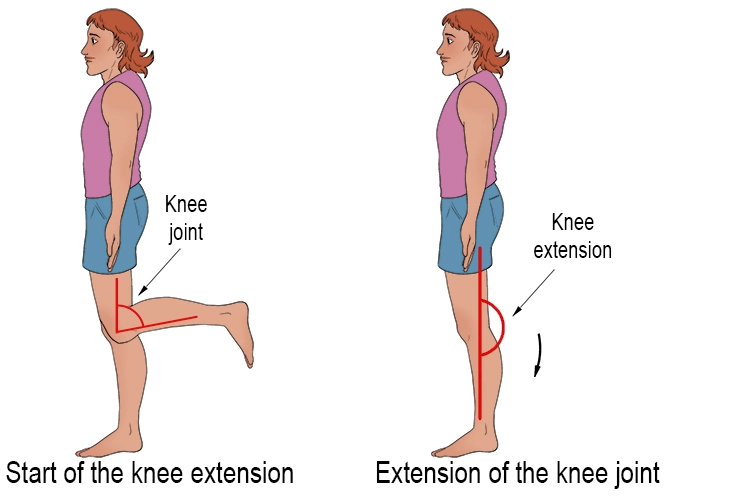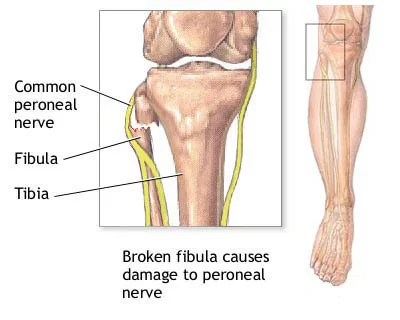Tummy Time for Baby
Table of Contents
What is Tummy Time?
- Putting your kid on his stomach to play is known as “tummy time.” Tummy time helps infants build the muscles they’ll soon need to lift their heads, crawl, and walk. “Back to sleep, tummy to play,” as the saying goes: Your baby should always be awake and under your close supervision during belly time.
When should I begin doing Tummy time?

- The American Academy of Pediatrics (AAP) suggests parents start tummy time for their infants the day after they leave the hospital.
How long should my infant spend each daytime on his or her stomach?
- Encourage your baby to practice lying on his stomach for a total of around 15 minutes each day (or two to three sessions of three to five minutes each), always with you nearby to supervise. In order for your baby to develop strength, you can leave him on his stomach for extended periods of time as he gets older.
How can I do tummy time?
After your baby wakes up from sleep or right after a nappy change is the best time to practice tummy time. Voici what to do: Trim the carpet in a small area. Put your infant on a playmat or a fresh towel on his stomach. With a few of their favorite toys, surround your infant. Try to maintain your infant’s belly-down position for three to five minutes, twice or three times per day. Work up to longer and more regular sessions throughout the day as your baby gets used to tummy time. Do not ever place your infant in a stomach-down position for sleep. Sudden infant death syndrome (SIDS) has prone to sleeping as a major risk factor.
Are you worried that your child may get a flat head from resting on his back? Avoid worrying: As newborns age, most flat patches round out. Tummy time is not the only way to change your baby’s sleep orientation. He should have his feet facing one way in his cot one week and the other way the next week. Additionally, limit your child’s time spent in bouncers, swings, car seats, and carriers, all of which add to the pressure on the back of their heads.
0–2 months for tummy time
- Dr. Badgett cautions against placing a newborn on their stomach with their face on the ground because newborns can’t lift their heads very high, if at all. A little towel rolled up might be used to support their chest.
- You can even lay on your back with the baby placed belly to belly on your own stomach.
- Your objective should be to perform tummy exercises two or three times per day for three to five minutes each, eventually increasing that time to at least 20 minutes. Your newborn won’t be able to accomplish much at first.
2-4 months for tummy time
- Your kid will become more aware of their surroundings as they start to gain strength. Longer periods of tummy time will be tolerated by them, and they may even grow to like it.
- According to Dr. Badgett, as people age, they will have stronger head control and be able to maintain their head elevation for longer periods of time. They might no longer require a towel to support them.
- Babies’ vision also begins to develop at this time, so while they are on their tummies, you could notice that they start to focus on you and start engaging slightly more.
4-6 months for tummy time
- Tummy time is more enjoyable now! Your baby will now have stronger core muscles and may begin rolling over from stomach to back and back to stomach.
- When that happens, Dr. Badgett explains, “They can start playing more.” They will begin to develop more arm strength and become much more autonomous. You may now begin introducing interactive features and toys for them to grab.
After 6 months, tummy time
- Work your way up to a full hour of belly time every day until your child can crawl. In fact, during stomach time itself, they might even begin to crawl.
- In the end, Dr. Badgett predicts, “They’ll use it as a kind of practice, trying to push themselves up to see what happens.” As infants grow, tummy time gradually gives way to crawling, walking, and fun.
What Role Does Tummy Time Play in Baby’s Development?
Tummy time promotes a baby’s motor and sensory growth. For proper motor, sensory, and visual development, tummy time is essential:
- Motor
- Baby’s spine, neck, shoulders, and core muscles are strengthened by motor play.
- Lay the groundwork for your child to achieve their motor milestones, such as rolling over, sitting up, crawling, and more.
- Sensory
- A baby’s tactile sense can be improved by feeling various textures (blankets, carpet, etc.) on their arms, hands, and cheeks.
- Baby develops proprioception, which is the awareness of one’s own body, as they move and change their weight.
- Baby can develop their movement and balance (vestibular sense) by being in various positions.
- Hand-eye coordination can be improved with vision. Baby can notice how their hands move and what they can do by looking down at them.
What are the advantages of tummy time, and why is it crucial?
Your child will benefit much from spending awake time belly-down. stomach time aids in stopping flat patches from developing on the back of the baby’s head. allows your child to use muscles other than those he would use to support himself. Your kid can eventually elevate his head because of the muscles in his arms, shoulders, upper back, and neck that he develops by doing push-ups. facilitates the development of motor skills like reaching, rolling over, sitting up, and crawling.
tummy time has a number of significant advantages:
- Rolling over, sitting up straight, and crawling are milestones that can be practiced.
- improves gross motor abilities
- Activates less often used muscle groups
- prevents flat head syndrome, also known as plagiocephaly
- helps a child develop head control
- reduces gas pain
- exposes the infant to a new environment
What can I do if my child detests being on his or her stomach?
Many infants dislike stomach time at first, but as they develop the muscles needed to lift their heads, must learn to accept and occasionally even love it. Make stomach time less painful while waiting by:
- attempting multiple shorter trips each day. At first, focus on 1 to 2 minutes at a time. Your baby will get used to extended belly sessions with practice.
- Rearranging the sites. Sometimes a change of environment is all that is needed to make tummy time bearable.
- rubbing his feet. A baby massage, if your child enjoys it, can promote tummy time.
- inviting a senior sibling to attend. Your infant may be feeling pressure from you as well as a new situation.
Your baby will be better prepared for the exciting next developmental phases with tummy time. Most infants can elevate their heads 45 degrees by the time they are 3 months old (leaning on their forearms), and 90 degrees by the time they are 1 month old (pushing up on their hands). Additionally, many infants start to crawl at about the 9-month mark (although some start earlier and some never start; both are entirely normal). So keep your eyes on the target and start logging your belly time!
Important Tummy Time Exercises
- Chest-to-Chest or Tummy-to-Tummy
- Lay flat or with your head supported by pillows on the floor or in a bed. Baby should be placed on your chest or stomach so that you can both see each other. For safety, hold firmly at all times.
- NFL or Tummy Down Carry Hold
- Carry the infant’s belly down while placing one hand between the legs and beneath the tummy. To support the baby’s head and neck, use the other hand. To help the baby get used to the position, nestling the baby close to your body.
- Lap Calm
- Lay the infant across your lap, face down. Baby can be steadied and calmed by having a hand on their bottom. Burping and calming an infant are other uses for this motion.
- An eye-level grin
- To promote eye contact, get close to the infant. Baby enjoys looking at your face!
Tummy Time Success Tips

Try some of these suggestions if a baby doesn’t seem to be enjoying tummy time.
If a baby is being looked after by multiple carers…
Make sure every one of the baby’s carers is aware that tummy time is a common practice.

If baby refuses Tummy Time…
Do a few minutes of Tummy Time after each diaper change or wash so that the infant learns to anticipate it.
Avoid Tummy Time immediately following a meal.

If the infant screams while doing belly time,
When the infant is happiest, try performing Tummy Time exercises.
Make tummy time entertaining.
Sing during stomach Time to soothe and quiet the infant
Rattles, toys, and mirrors can all be used to promote visual tracking.
At the infant’s eye level, get down on the floor. The infant adores your face!

If the infant nods off during belly time…
Do not let them sleep on their stomachs; instead, place them on their backs.
.
Never forget: Play on your stomach, sleep on your back!
- Babies should always sleep on their backs, according to the American Academy of Pediatrics (AAP). This implies that lying on their stomachs while awake is essential for development!
- Also, keep in mind that you should turn your baby over and let them sleep on their back if they nod off during tummy time.
FAQs
When are newborns able to begin tummy time?
For full-term babies, the American Academy of Pediatrics advises supervised tummy time beginning in the first week after your baby’s umbilical cord stump falls off. Success for babies is one minute at a time, two to three times each day.
How long do infants spend on their bellies?
Your baby ought to perform it frequently every day. Soon after birth, begin doing belly time. Try tummy time for 1-2 minutes throughout the first two weeks. Increase your daily duration by 5–10 minutes increments.
What results from not doing tummy time?
The risks of not giving your baby frequent tummy time include the possibility that they won’t grow their neck and upper body muscles as they should. They might not be able to raise their heads up as high as babies their age. Additionally, they may experience torticollis, which is a lateral neck muscular tightening.
What are the five postures for tummy time?
To the stomach or to the chest.
The football holds or the belly down carry.
Lap Relax.
Smile at eye level.
Tummy Moment.Does lying on the stomach strengthen infants?
Your baby’s neck, shoulders, arms, and trunk gain strength as a result of lying on his stomach. He will be able to sit, roll, and crawl easier as a result. While awake, belly time aids him in maintaining his round head shape.







